M9 Lan-Cay BAYONET ( SEALED IN PACKAGE )
Lan-Cay 2nd Contract Variation
Made during : 1995 - 1996
Black blade and sharpening stone with the scabbard
...In the 1995 time period they were making both hollow ground and flat ground blades then switched to only making flat ground... (Mr Bill Porter) |
|
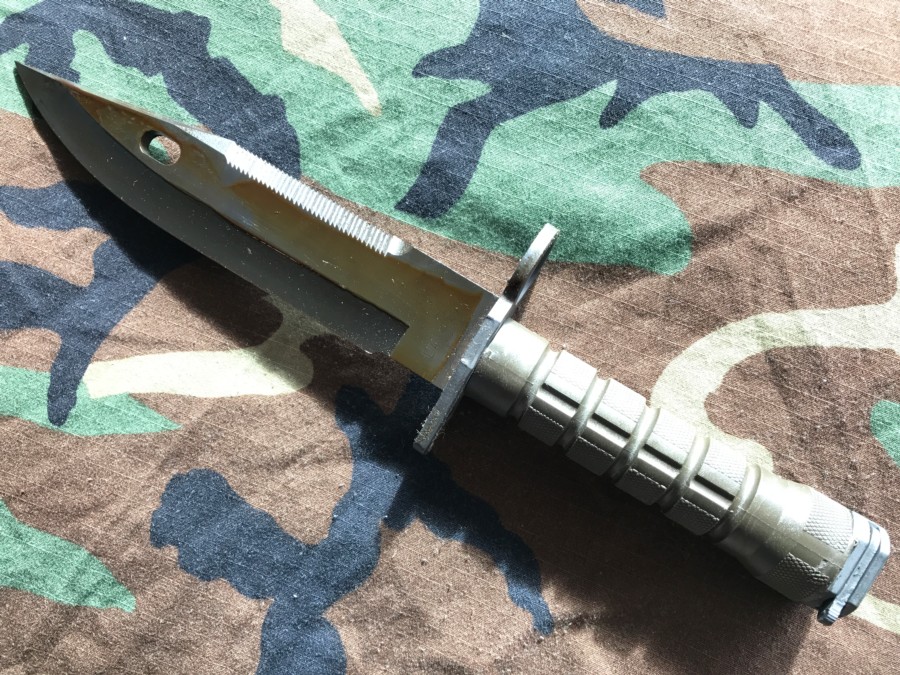 |
Add. information by my friend PWCOSOL :
1. Collector of M9 often use FASTEX date on scabbard to know when bayonet was assembled. This is only possible if scabbard is original one. But, this is only estimate and actual manufacture date of bayonet could be earlier or later.
This is because L-C would order new FASTEX clips when supply run out. These would likely be stored in bin with maybe some remaining clips from previous order on bottom.
New clips put on top. So ,is possible when newest dated clips nearly used up, older dated clips left on bottom now get used.
2. When production of new M9 bayonet was not fast enough to meet quota for next delivery to Army, I think L-C sometimes used earlier blades only partially finished, so took less time to complete and meet quota.
This is proven when L-C got waiver from Army to use 200 first contract blade with fuller during 2nd contract. I think this "open the door" to L-C to use other blades form previous production as well.
3. I think about what Homer M. Brett say in letter of 11 September, 1995:
a. 15,000 M9 sent to Army on 18 August, 1995. L-C was one month ahead of delivery schedule at this time.
b. One day earlier (17 August 17, 1995) L-C removed old LANCAY marking stamp & replaced with LAN-CAY stamp.
c. Based on these events and dates, all first 15,000 M9 were marked LANCAY
d. But, change to blade edge grinding, from concave to angle, happened when production of first 15,000 M9s maybe 60% complete.
e. This would mean there should be no concave ground bayonets with Lan-Cay marking like your example.
f. But, you have one. What this means to me is some left-over concave ground blades were assembled during the 2nd quota and were stamped LAN-CAY
g. I believe blades blanks were machined and had edge ground before markings were applied. If there was problem with blade it would not meet specifications of Army, it was rejected.
Some of these were later used to make commercial M9 or purchased from collectors whom knew Barry Brown and went to L-C to buy parts.
I have seen at least two L-C M9 with no markings on blade at all, but it was finish-machined and oxide finish.
This is why I think markings were applied later in production sequence.
h. I have one bayonet which would support this scenario I have mentioned. It is a first contract M9 with fuller and step on blade. Had this blade been completed at time it was made,
it should have concave edge and be marked LANCAY. However, this is not case. M9 has angle-ground blade and is marked LAN-CAY.
This bayonet should not exist, either. I believe this may be one of the 200 Army gave waiver to L-C to use during 2nd contract.
Also, these are my opinions which others may disagree with. I think the bayonets "speak for themselves"
|
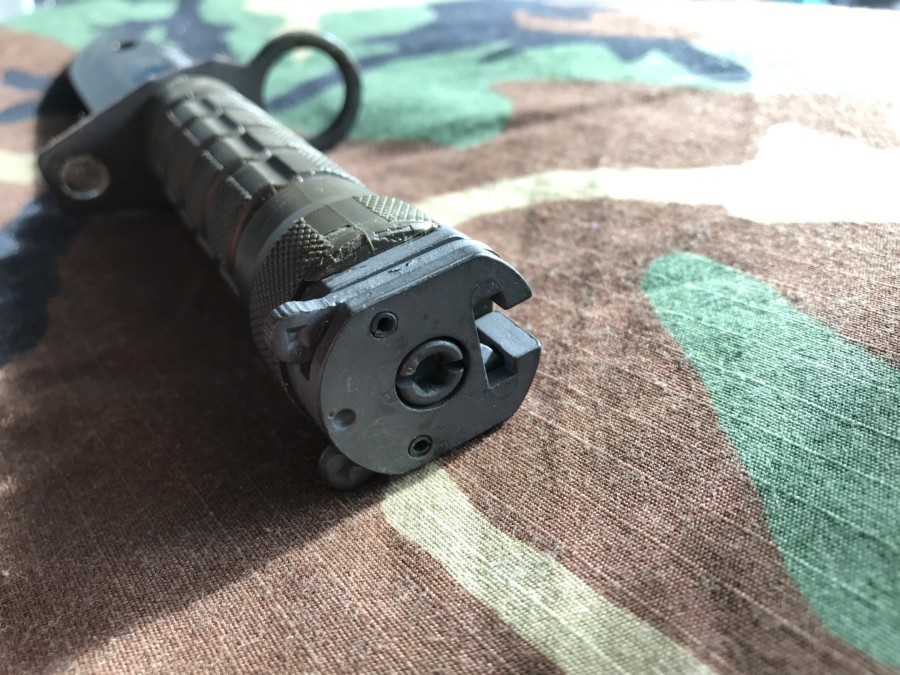 |
|
|
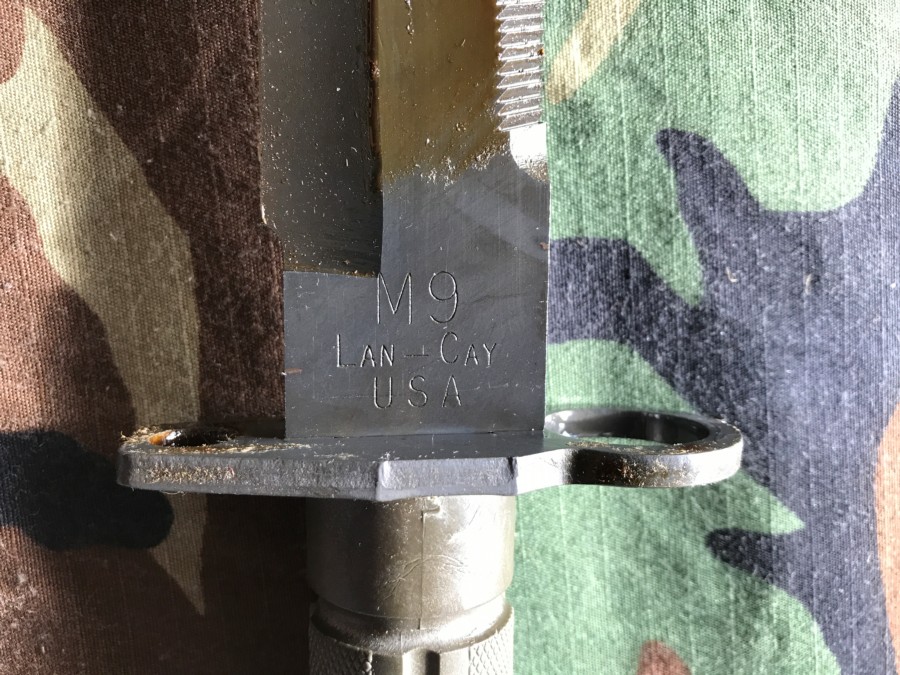 |
|
|
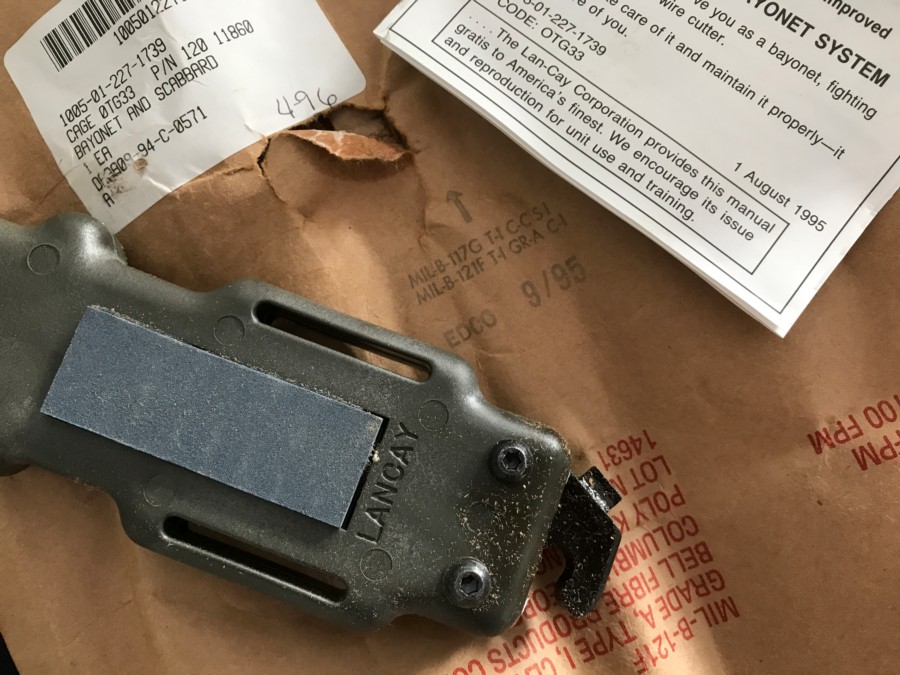 |
|
|
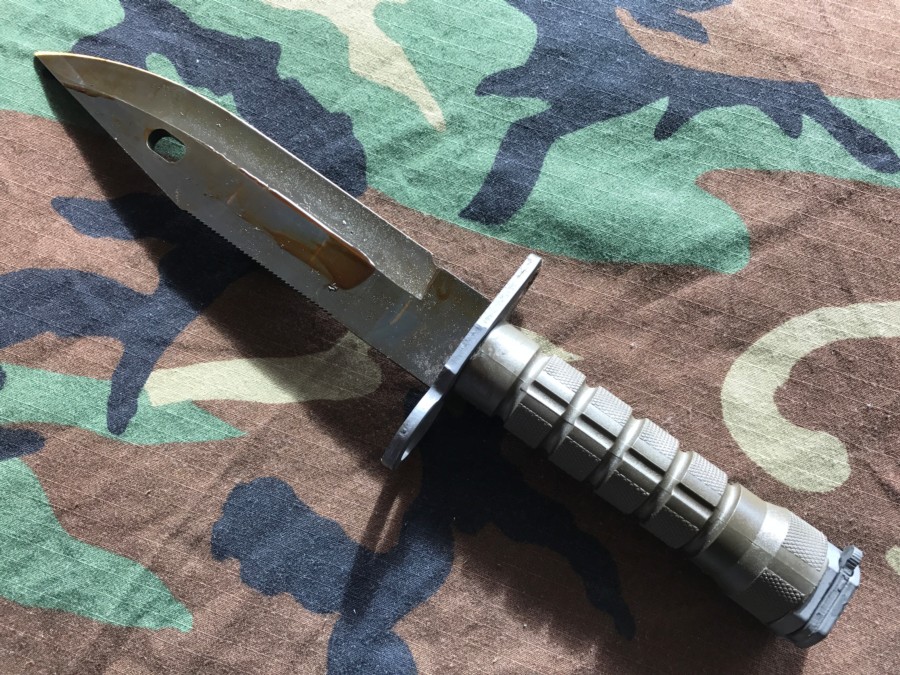 |
|
|
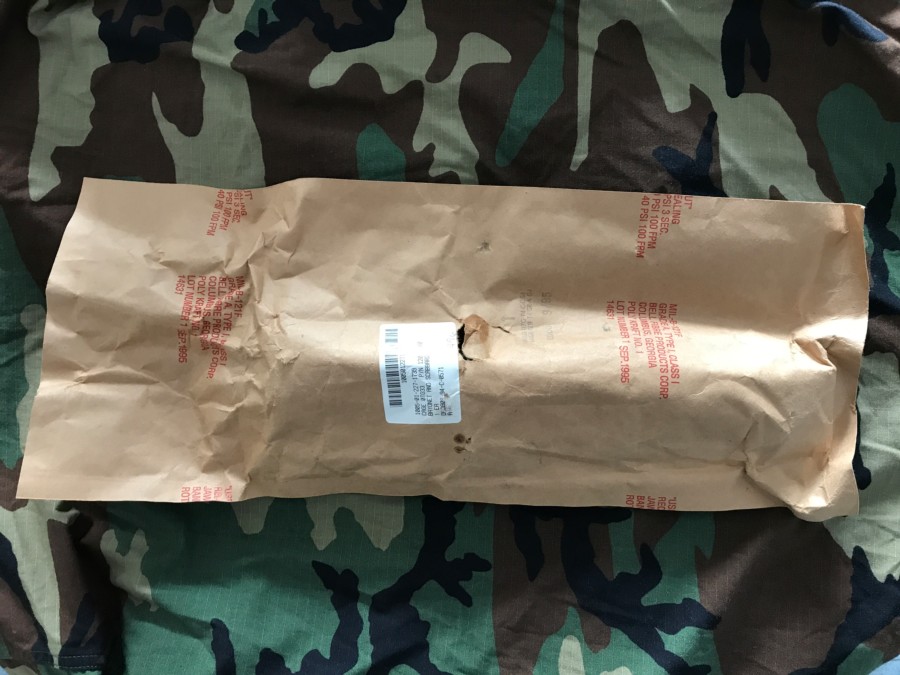 |
|
|
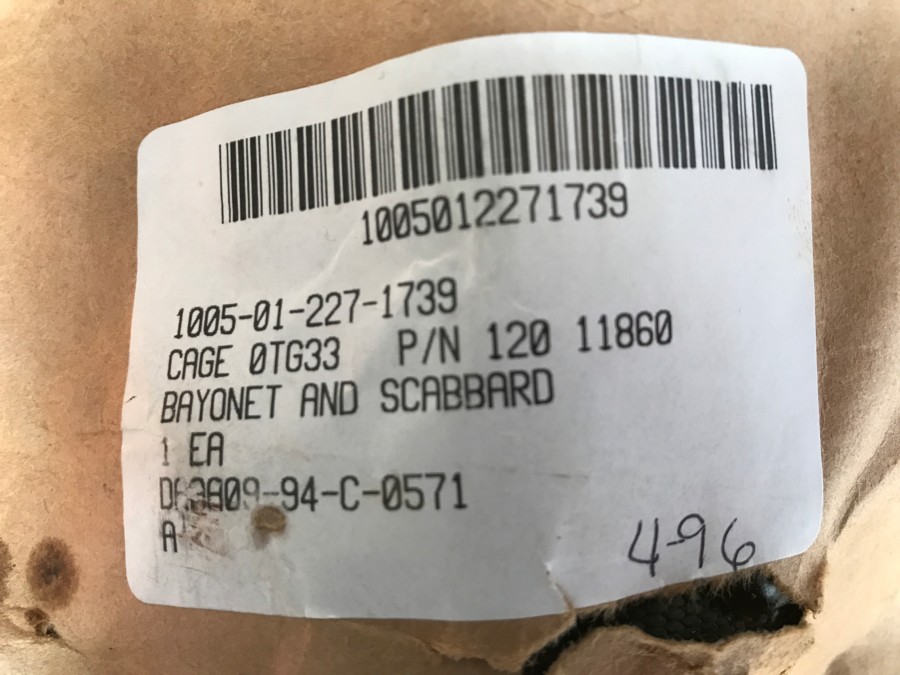 |
|
|
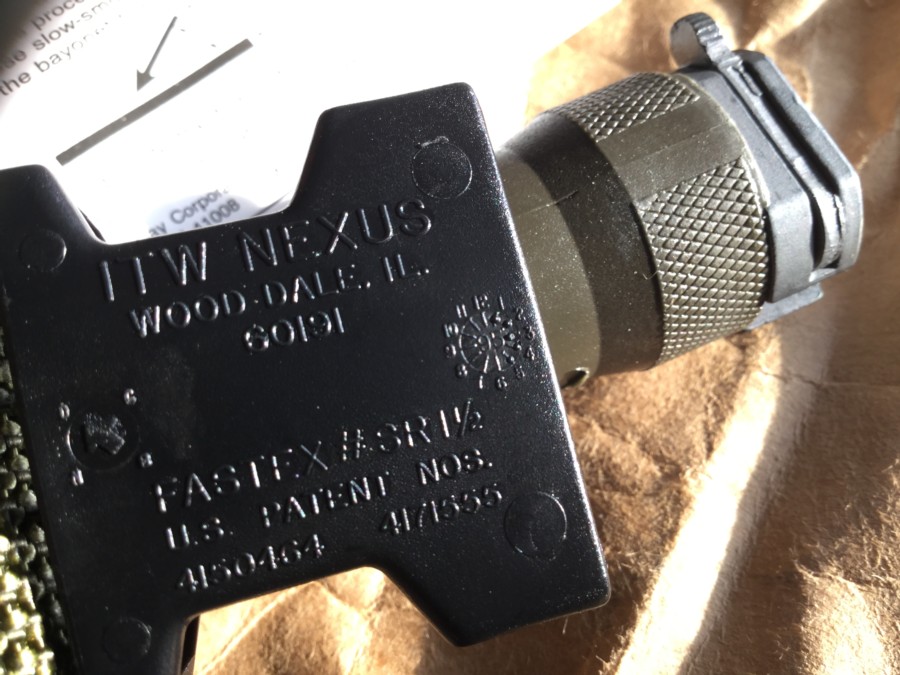 |
|
|
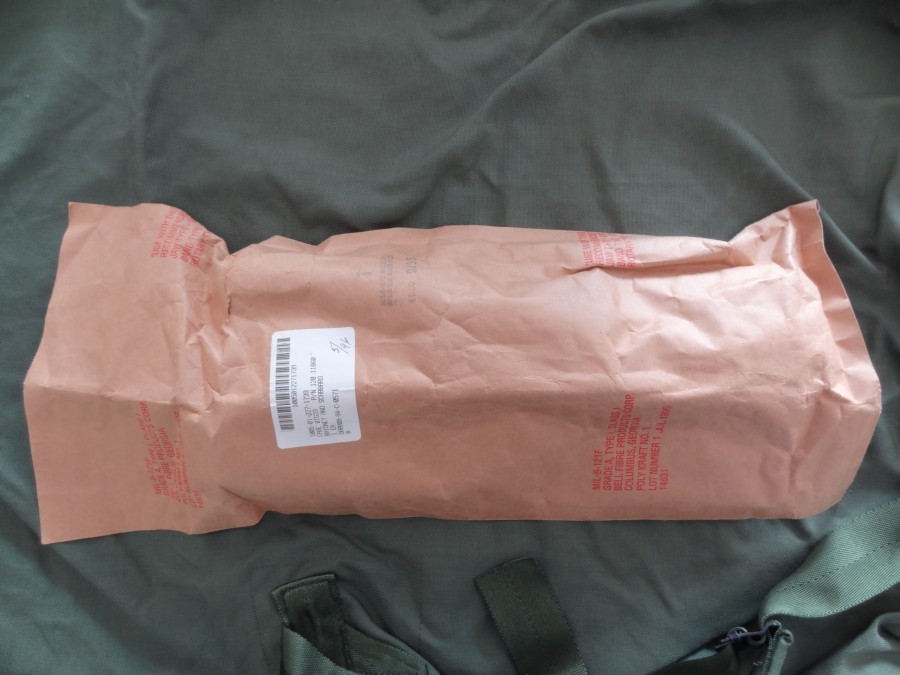 |
|
|
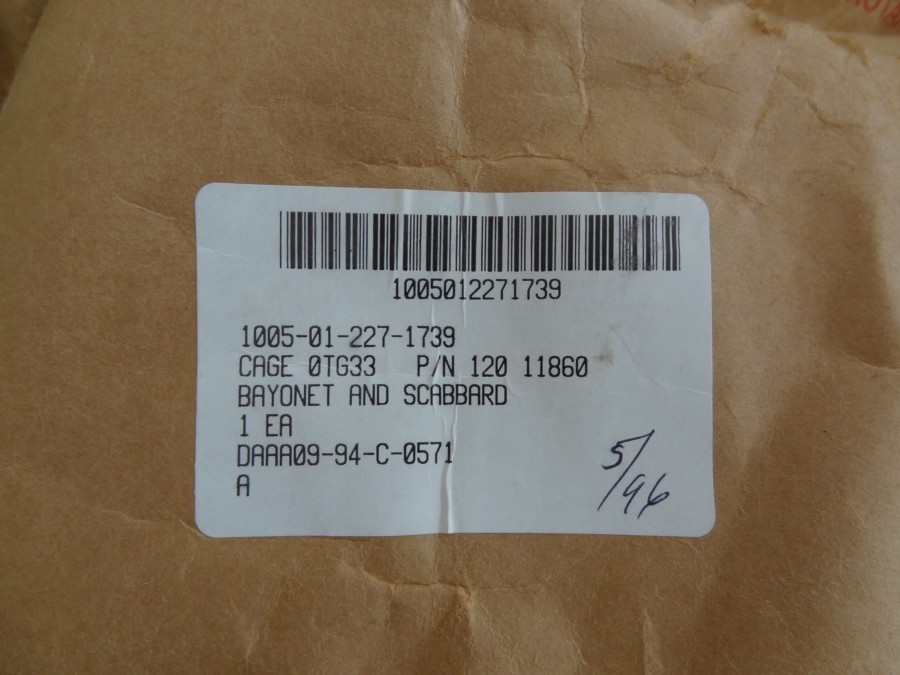 |
|
|
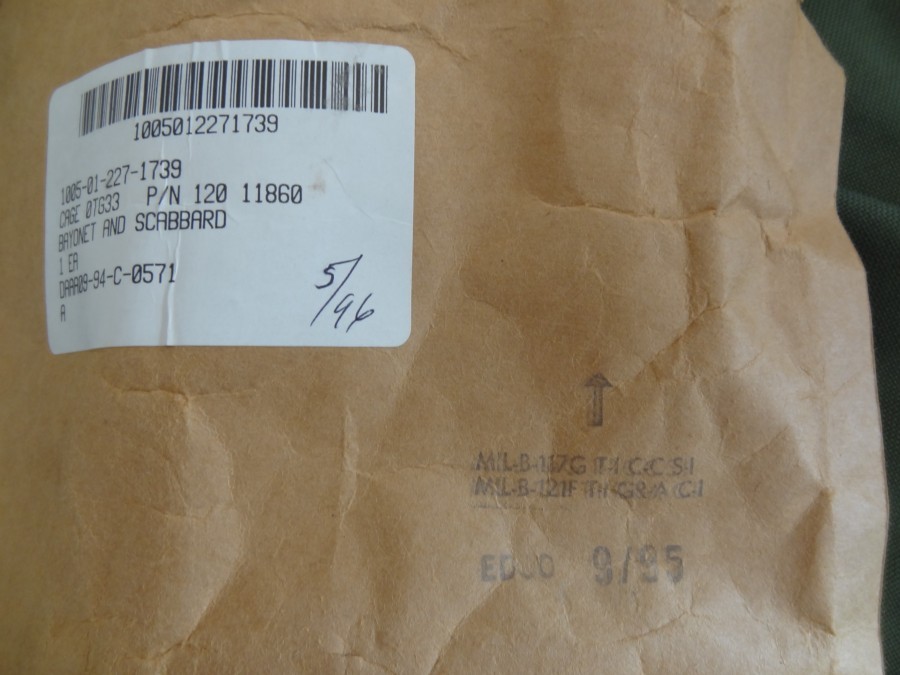 |
|
|
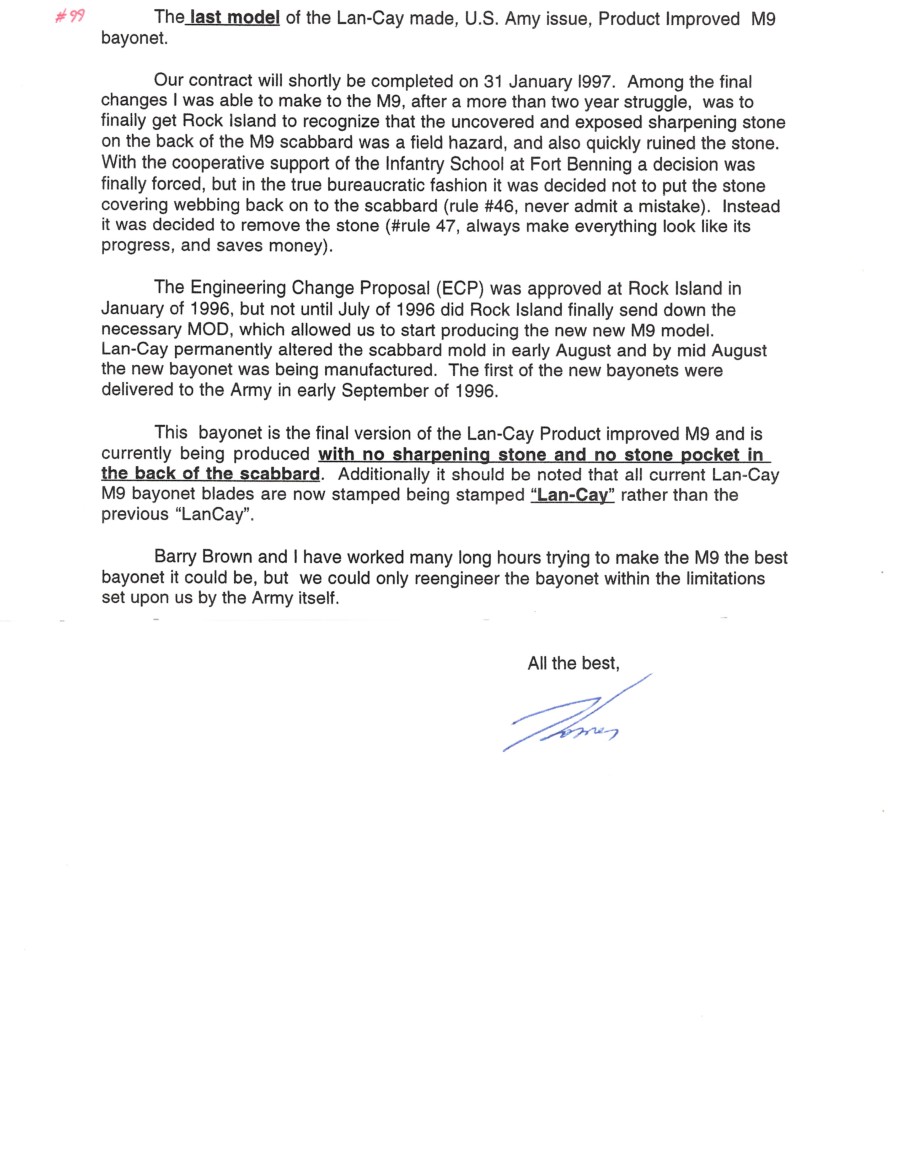 |
|
|
|
Mercredi 30 Avril 2025 - - © 2025  |
|